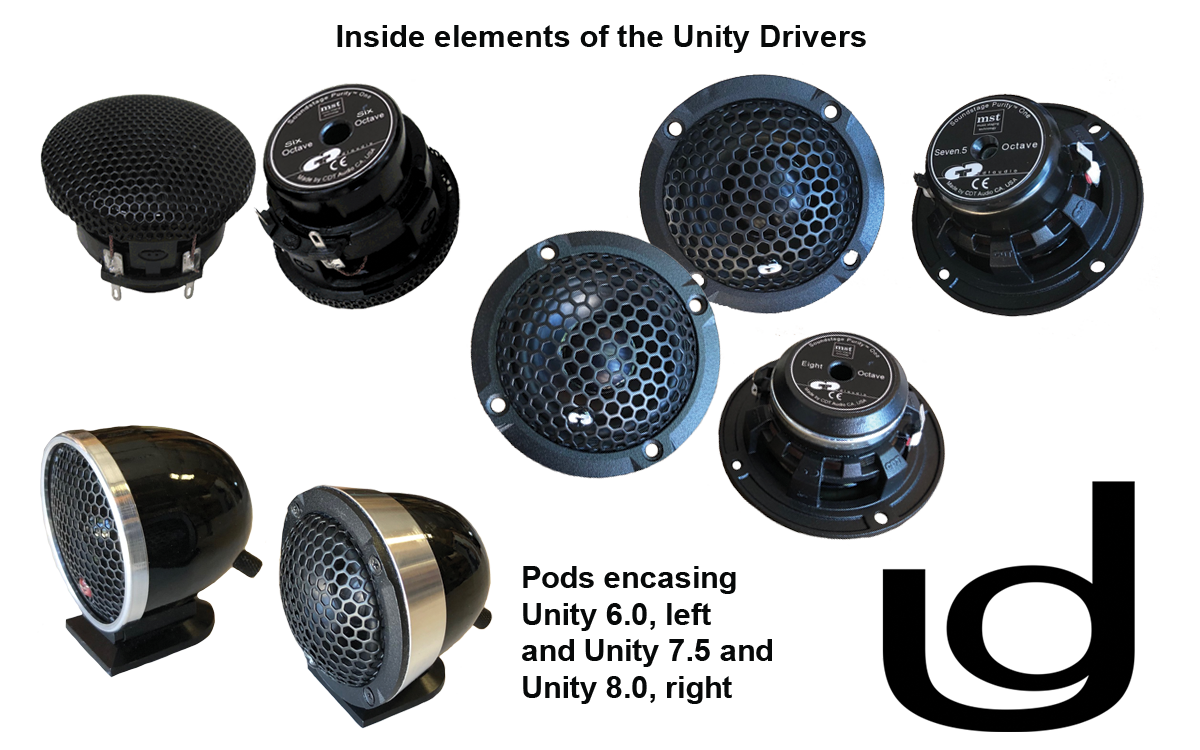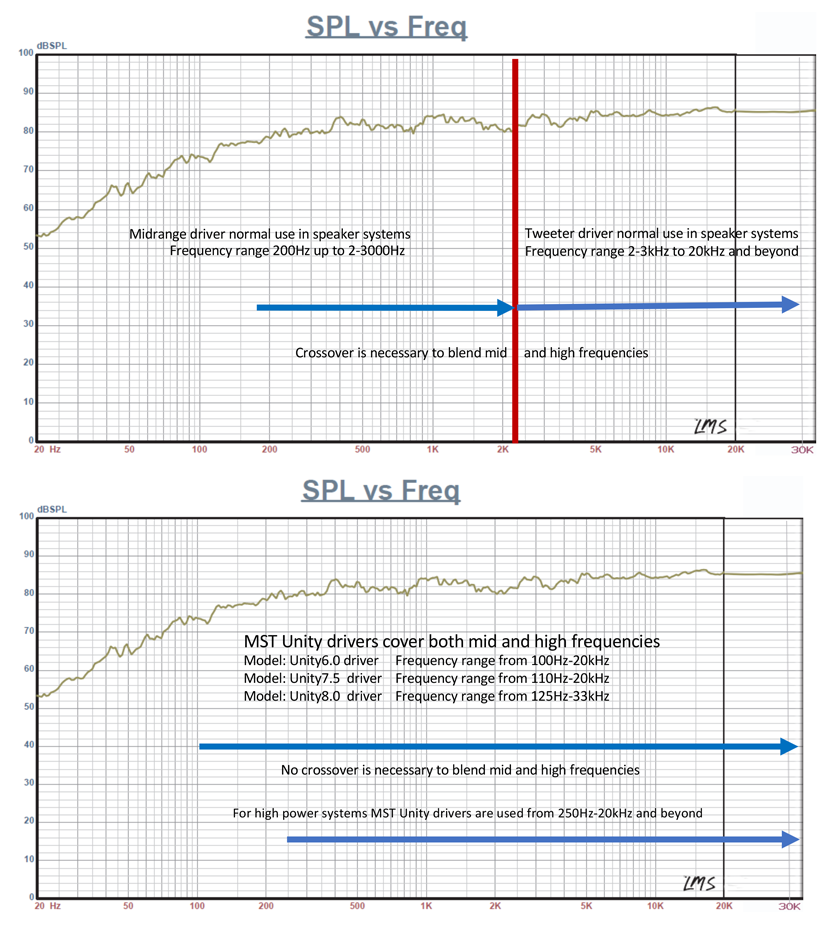
The loudspeaker is the last interface between the recorded electrical information of music and the physical reproduction of those frequencies that comprise the music itself. When you think of the remarkable journey that reproduced music must endure, it is absolutely amazing how realistic and lifelike today’s advanced technologies and equipment sounds.
The new MST Unity drivers are the latest in decades of technological achievement designed to render reproduced music ever more lifelike. Here is what is so special about these drivers and why they work so astoundingly well.
For decades, the common pathway to realistic reproduction for loudspeaker designers has been to use multiple drivers to cover the broad spectrum of frequencies found in live music. Many, many engineers have spent thousands of hours making all variety of drivers to reproduce ultra-high frequencies super tweeters), upper frequencies (tweeters), middle range sounds (midranges), upper bass ranges (mid-woofers), and deep bass (woofers), and deepest bass (subwoofers). While there are many, many superb drivers that exemplify this assortment, none of them have ever solved the problems of how you get different drivers to blend together perfectly. They are all different sizes, different speeds, different timbres, different electrical values - an engineering nightmare.
That’s why Unity drivers are such a refreshing solution. They have the unique capability to accurately and cleanly reproduce a wider range of frequencies than any tweeter or midrange today. This means that there are NO additional electrical components wired into a crossover between the twitter and the midrange to mess up the musical reproduction though the ultra-critical of 200 - 20KHz. Unity drivers handle that range with clarity, smoothness and exceptionally broad soundstage.
The chart to the right gives you a great picture of Unity drivers’ performance and the impact on the rage of frequencies unimpeded by any electrical components of any kind. In the chart you’ll see that the normal range of frequency response for a midrange driver is from approximately 200 Hz up to 2 - 3,000 Hz. And tweeters usually cover from 2 - 3,000 Hz up to 20,000 Hz and beyond.
The amazing Unity drivers are able to cover from as low as 100 Hz up to 20,000 Hz and beyond - with no crossovers, no added components, no complication.
A second huge advantage for all Unity drivers is their small size (2”) enables them to function as a point source throughout their exceptional frequency range. Audio enthusiasts are very fond of the imaging abilities are more lifelike presentation. The sound stage that Unity drivers create is remarkably wide and tall, exceptionally spacious and deep, and it is the most realistic sound reproduction system available today
See chart below for visual explanation of what these remarkable drivers are doing. 